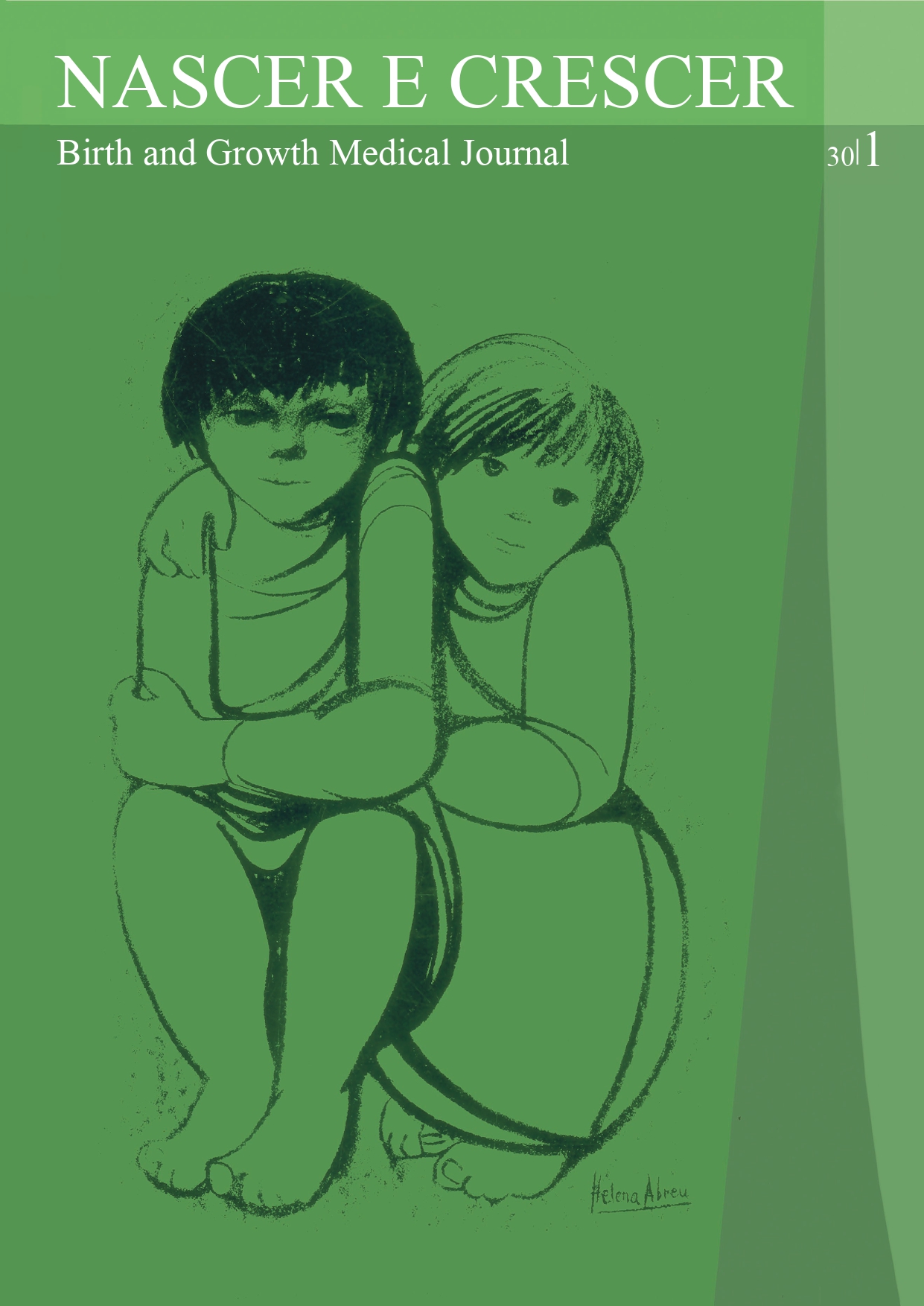Gastroenterological clinical case
DOI:
https://doi.org/10.25753/BirthGrowthMJ.v30.i1.18730Keywords:
children, hematochezia, juvenile polypAbstract
Gastrointestinal polyps are frequent in children and represent the most common cause of colorectal bleeding in this age group. Among those, juvenile polyps are the most frequently found. Intermittent mild hematochezia is the main symptom of colon polyps. Most polyps are pedunculated and, when located in the rectum, may prolapse. In most cases, juvenile polyps are solitary and located in rectosigmoid. Although malignancy risk of a solitary juvenile polyp is very small, excision is recommended to confirm benign nature. Total colonoscopy should be considered to exclude multiple or proximal polyps.
Downloads
References
Lee BG, Shin SH, Lee YA, Wi JH, Lee YJ, Park JH. Juvenile Polyp and Colonoscopic Polypectomy in Childhood. Pediatr Gastroenterol Hepatol Nutr. 2012; 15:250-255. https://doi.org/10.5223/pghn.2012.15.4.2502.
Patel N, K Marsha , Stephen J Teach, ST, Teach ST, Heyman MB, Hoppin AG. Lower gastrointestinal bleeding in children: causes and diagnostic approach. Uptodate. Accessed in april 2019. Available from: https://www.uptodate.com/contents/lower-gastrointestinal-bleeding-inchildren-causes-and-diagnosticapproach?search=juvenile%20polyposis&source=search_result&selectedTitle=4~19&usage_type=default&display_ran k=4.
Pereira F. Gastrenterologia Pediátrica: aspetos práticos. Sociedade Portuguesa de Endoscopia Digestiva. 2010. Available from: http://www.sped.pt/index.php/publicacoes/publicacoes-sped/664-gastrenterologia-pediatrica-aspectos-praticos.
Wang LC, Lee HC, Yeung CY, Chan WT, Jiang CB. Gastrointestinal polyps in children. Pediatr Neonatol. 2009; 50:196-201.
Downloads
Published
How to Cite
Issue
Section
License
Copyright (c) 2021 Mariana Portela, Catarina Barroso, José Luis Carvalho, Maria Miguel Gomes

This work is licensed under a Creative Commons Attribution-NonCommercial 4.0 International License.
Copyright and Authors' Rights
All articles published in Nascer e Crescer - Birth and Growth Medical Journal are Open Access and comply with the requirements of funding agencies or academic institutions. For use by third parties, Nascer e Crescer - Birth and Growth Medical Journal adheres to the terms of the Creative Commons License "Attribution - Non-Commercial Use (CC-BY-NC)".
It is the author's responsibility to obtain permission to reproduce figures, tables, etc. from other publications.
Authors must submit a Conflict of Interest statement and an Authorship Form with the submission of the article. An e-mail will be sent to the corresponding author confirming receipt of the manuscript.
Authors are permitted to make their articles available in repositories at their home institutions, provided that they always indicate where the articles were published and adhere to the terms of the Creative Commons license.


